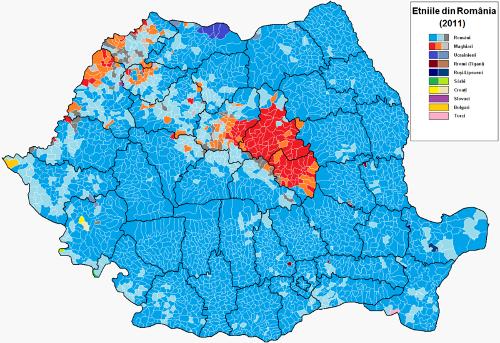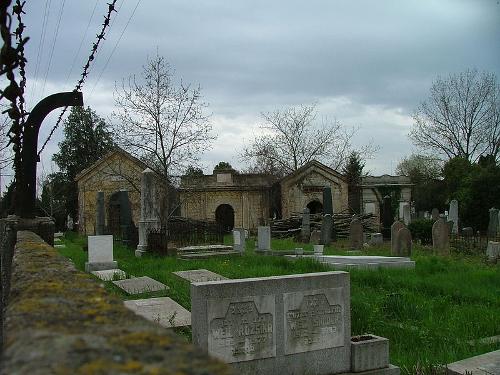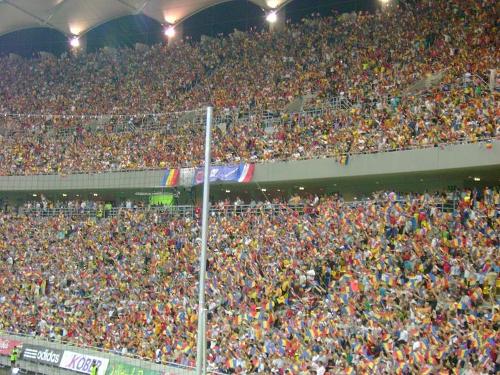ROMANIA
Population

Population

Cities in ROMANIA
| Brasov | Bucharest |
Population
Composition
 Population groups RomaniaPhoto: Szabi237 CC 4.0 International no changes made
Population groups RomaniaPhoto: Szabi237 CC 4.0 International no changes made
The population of Romania consists of approximately 89.3% ethnic Romanians and approximately 11% national minorities; 6% from Hungarians, who were again severely oppressed and discriminated against in the 1980s and who emigrated in large numbers to neighboring Hungary after 1989 (they mainly live in Transylvania) andfurthermore from Germans (Zevenburg Saxons) and Danube-Swabia). Their numbers are also steadily decreasing as a result of emigration. In addition, there are minorities of Ukrainians, Serbs, Croats, Bulgarians, Slovaks, Czechs, Russians, Tatars, Turks, Greeks, Armenians and Poles.
Officially, 1.2% of the population consists of gypsies (Romani). It is unofficially assumed that there are between 1 and 2 million gypsies in Romania.
It is estimated that around 10,000 Romanians live abroad, especially in the neighboring Republic of Moldova. People who speak a dialect very closely related to Romanian are: Istro-Romanians in the Croatian peninsula of Istria, Megleno-Romanians in Bulgaria, Armâni or Aromanians in Albania, Bulgaria, Macedonia and especially Northern Greece.
Brief description of the largest minority groups
Germans
As early as the 12th century, groups of Germans or Saxons were brought to Romania to trade and to strengthen the borders. To this end, the Saxons built fortified towns that grew into seven castles (Siebenbürgen is the German name for Transylvania).
Many Swabians settled in Romania in the 18th century. Under the dictator's regime, many German descendants wanted to return to Germany. This was allowed against payment of 8,000 Marks and the number of Germans fell in less than ten years from 400,000 in 1975 to 119,400 in 1992. The German Romanians mainly live in the Banat and in Central and Southern Transylvania.
Hungarians
The largest minority group in Romania are the Hungarians. Especially Transylvania is a real "Hungarian" area because about 25% of the population is of Hungarian descent. In fact, they form the majority in the districts of Harghita and Covasna. The Hungarians can be divided into two large groups: the so-called Széklers in Eastern Transylvania (Tirgu Mures) and the others who mainly live in Central and Northwest Transylvania (Cluj-Napoca, Arad, Oradea and Satu Mare).
After all these years, things are still not going very well between the Romanian farmers and the former Hungarian landowners. In 1990 riots between Romanians and Hungarians took place in Tirgu Mures, in which some people were killed. Hungarian-language education is now available at all levels.
 Jewish cemetery in Timisuaru, RomaniaPhoto: Emmanuel Dyan CC 2.0 Generic no changes made
Jewish cemetery in Timisuaru, RomaniaPhoto: Emmanuel Dyan CC 2.0 Generic no changes made
Jews
Before the Second World War, approximately 750,000 Jews lived mainly in Northern Romania. Synagogues can still be found in Bucharest, Caransebes, Dej, Sighetu Marmatiei and Timosoara. During the war, approximately 400,000 Jews were deported and murdered by fascist elements in the army (including Marshal Ion Antonescu) and the police.
From 1943 many Romanian Jews emigrated to what was then Palestine (now: Israel) and therefore fewer than 10,000 Jews are currently living in Romania.
Lipovenes
Lipovenes are Russian Romanians who fled to Romania in the 17th century for religious reasons. Changes in liturgical practices of the Russian Orthodox Church met with much resistance in this group of so-called "Old Believers".
They were then persecuted and fled to, among other places, southern Moldavia and the north of the Dobruja, but have retained their own identity ever since. There are currently approximately 35,000 Lipovenes living in Romania.
The Lipovenian Church of Romania has its own metropolitan, which has its seat in Braila. They are financially supported by Canadian and American Lipovenes.
Gypsies
There are currently about 670,000 Gypsies (Romanian: tigani) or Roma (Romanian: rromi) living in Romania, at least according to the official readings. Others claim that there are about 2 million gypsies in Romania, but that most of them are included in the Romanian population and therefore cannot be recognized as gypsies anymore. The Roma can be divided into about 40 different groups. The main groups are the Calderari (nomads and blacksmiths), the Lautari (established gypsies and musicians) and Hungarian-speaking gypsies who are doubly discriminated against by the Romanian population.
Most Roma live in permanent places, but a few groups still move around, especially in the summer. The relationship between the Roma and the native Romanians is very tense from time to time and there are frequent fights and arson attacks. The social position of the Roma has only deteriorated after the revolution of 1989. Unemployment among the Roma, in particular, is gigantic and are considered the main culprits of the sharp rise in crime rates. Figures that cannot be substantiated in any way.
In April 2000, the first national Roma bank was opened in Craiova. This bank was established to improve the economic and social life of the Roma.
Other groups
The size of the many other population groups is almost impossible to determine. It can still be ascertained where most members of these minority groups live:
The Turks mainly live in the Dobruja, a Turkish territory; the Ukrainians live in the Maramures and the area around Suceava; the Serbs along the border with Serbia.
 Romanian football fansPhoto: Br'er rabbitons CC 3.0 Unported no changes made
Romanian football fansPhoto: Br'er rabbitons CC 3.0 Unported no changes made
Demographics
Romania is home to 18,150,000 people in 2024. The population density is approximately 80 inhabitants per square kilometer. The population density is fairly even outside the high mountains, the Danube Delta and Dobrigea. The share of the urban population in the total has risen sharply in recent years.
Partly as a result of Ceausescu's contested 'urbanization policy', whereby entire rural municipalities were housed, sometimes by force, in urban conglomerations to work in industry, the share of the urban population increased from 32% in 1969 to 54.7% in 2017.
The largest city is the capital Bucharest with 1.8 million inhabitants.
The annual population increase was nil in the period 1985–1995, i.e. 0.0% In the 21st century it is slightly negative, in 2017 - 0.94%.
The average life expectancy in 2024 was 73.4 years for men and 80.5 years for women. As in the rest of Europe, the population will age at a fairly rapid pace due to the declining birth rate.
Sources
Bos, J.W. / Roemenië : mensen, politiek, economie, cultuur, milieu
Koninklijk Instituut voor de Tropen
Democratisering aan de Donau : Roemenië na de revolutie van 1989
Instituut voor Publiek en Politiek
Roemenië
Steunpunt Oost-Europa Projecten
Versteegen, J. / Roemenië
Gottmer
Williams, N. / Romania & Moldova
Lonely Planet
CIA - World Factbook
BBC - Country Profiles
Copyright: Team The World of Info